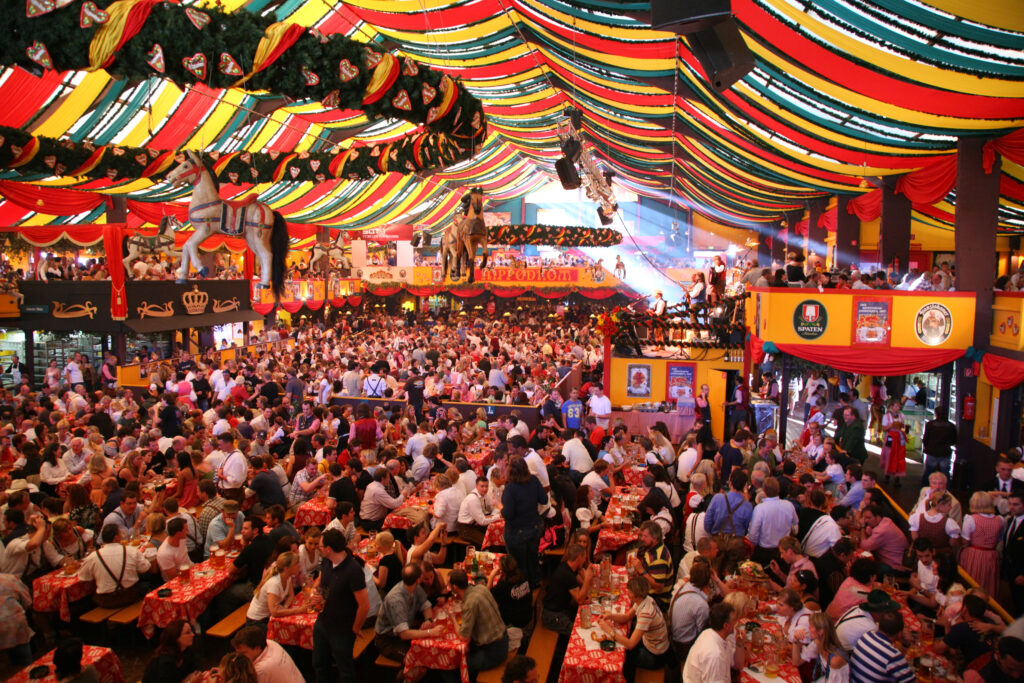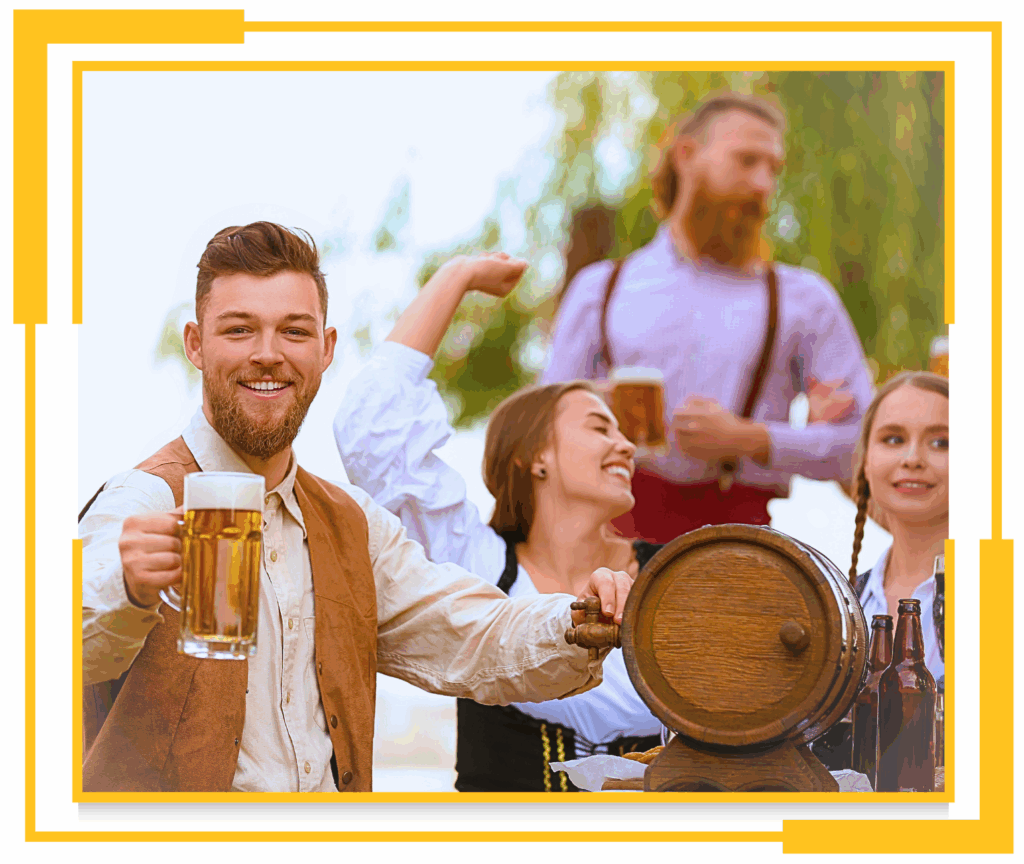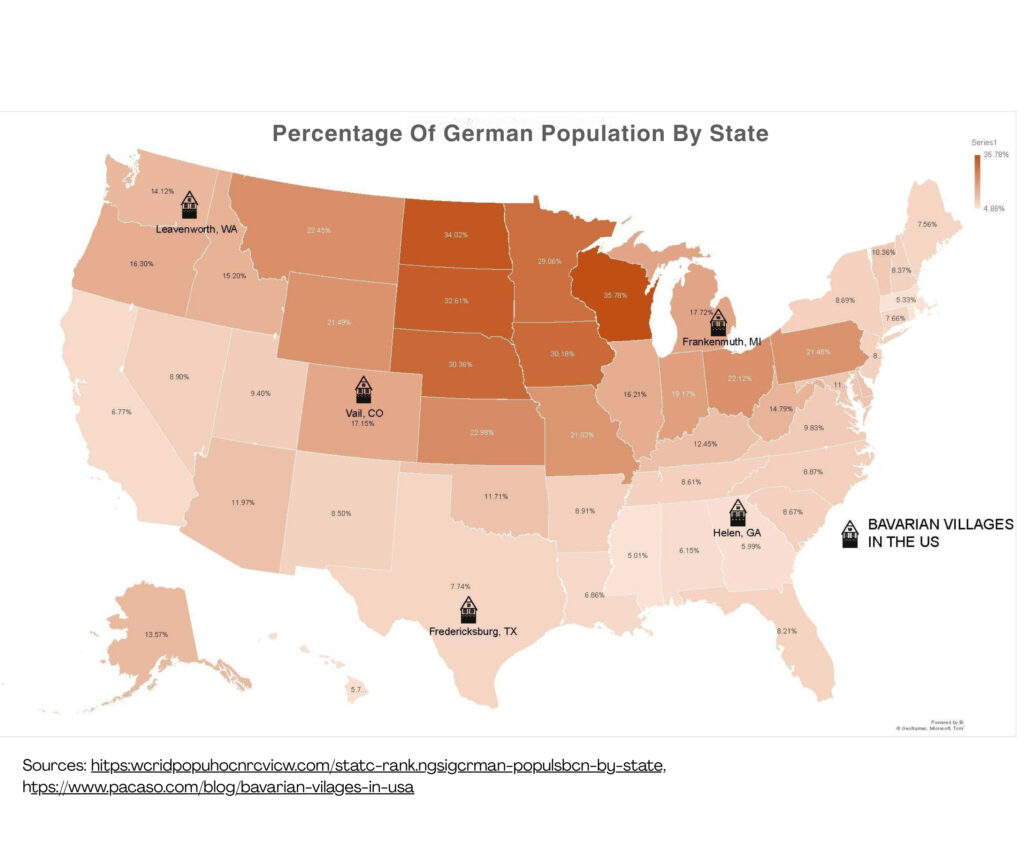Oktoberfest in Germany and Around the USA

By Melissa Watkins, Loan Mantra
As we prepare to roll out the barrel for Oktoberfest, the world’s most renowned beer festival taking place in Munich, Germany, we invite you to immerse yourself in this grand celebration of Bavarian culture. This annual two-week event showcases an abundance of beer steins, pretzels, lively dancing, traditional attire, beer tents, carnival rides, and fun. Although its name suggests it occurs in October, Oktoberfest kicks off in September. This year’s festival begins on September 20 and continues until October 5, 2025, marking an impressive 190 years of festivities! We will explore the various aspects of Oktoberfest, including its financial impact on the Munich economy and how these valuable lessons can be applied to your beer business.
Oktoberfest History
The inaugural Oktoberfest took place on October 12, 1810, as part of the wedding festivities for Crown Prince Ludwig (later King Ludwig I) of Bavaria and Princess Therese von Sachsen-Hildburghausen. Residents were invited to enjoy a five-day celebration culminating in a horse race at Theresienwiese or “Therese’s green.” The event’s popularity led to the race being held annually, eventually evolving to include food stalls and beer tents, resulting in the pop-up beer halls made of plywood, complete with interior balconies and bandstands, that visitors enjoy today. These beer halls and tents accommodate over six million guests anticipated at the 2025 Oktoberfest.
Preparations for this year’s event started June 30. Each Munich brewery constructs temporary structures with seating for around 6,000 people. The breweries also participate in parades featuring beer wagons, floats, and people dressed in folk costumes. The mayor of Munich officially opens the festival by tapping the first keg. Total beer consumption during Oktoberfest exceeds 75,800 hectoliters (approximately 2 million gallons).
Economic Impact of Munich Oktoberfest
Oktoberfest serves as a significant driver of economic growth, generating €1.25 billion and accounting for up to 2% of the city’s Gross Domestic Product (GDP). Millions of visitors from across the globe greatly contribute to hotel occupancy rates, dining, shopping, and public transportation. Despite rising beer prices and high inflation, 6.7 million guests attended Oktoberfest last year. Each year, 12,000 to 13,000 jobs are created due to the festival, resulting in an annual wage growth of 6.6%.
The creation of both temporary and permanent job opportunities benefits individuals and bolsters the city’s economy. The influx of workers leads to increased spending in Munich, positively affecting businesses beyond the festival. Local restaurants, transportation services, and accommodation providers all experience heightened activity, contributing to the city’s overall economic vitality.
The Department of Labor and Economic Opportunity reported that Oktoberfest had a significant economic impact, attracting about 7.2 million visitors who spent €442 million on the festival grounds. Total spending on food, drinks, and rides reached €1.25 billion. Visitors from outside Munich spent €505 million on accommodations, boosting the hotel sector. Beer tents generated €300 million, with setup costs between €1-2 million, and organizers earned a 7.8% profit. The festival produced 7 million liters of beer, resulting in €75.7 million in tax revenues. The hotel and hospitality sectors gained €500 million, while stalls, bars, and rides contributed €140 million to the economy. Souvenir sales, including Lederhosen and Dirndls, added €160 million to individual trade.
Long-Term Economic Impact
Beyond immediate economic benefits, the festival also generates long-term advantages. Oktoberfest fosters strong brand recognition and nostalgia for Germany, attracting year-round visitors and tourists, leading to revenue that stretches beyond the Oktoberfest season. This allure encourages infrastructure investments and foreign businesses, directly benefiting the German economy, promoting international collaborations, and enhancing the nation’s global presence.

Willkommen (Welcome) to Oktoberfest in the U.S.
Some of the most popular Oktoberfest celebrations in the U.S. include:
1. Oktoberfest Zinzinnati (Cincinnati, OH), September 18-21, 2025, largest with 800,000 2024 attendees.
2. The Denver Oktoberfest (Denver, CO), September 25-28, 2025, activities: keg bowling to stein hoisting, live music and more.
3. Oktoberfest La Crosse, (La Crosse, WI), September 25-28, 2025, longest running.
4. Big Bear Lake Oktoberfest (Big Bear Lake, CA), September 6- November 8, 2025, celebrating 55 years.
5. Helen Oktoberfest, (Helen, GA), September 25 – November 2, 2025.
6. Mt Angel Oktoberfest, (Mt. Angel, OR), September 11- September 14, 2025.
7. Wurst fest (New Braunfels, TX), November 7- November 16, 2025. Ten-day festival that raises over $20M for nonprofits.
8. Reading Liederkranz Oktoberfest, (Reading, PA), October 1 – October 5, 2025.
9. Schmidt’s Columbus Oktoberfest, (Columbus, OH), September 5-September 7, 2025
10. New Ulm Oktoberfest, (New Ulm, MN), October 3- October 11, 2025.
Bavaria in America
Here are some of the most delightful Bavarian villages in America:
1. Leavenworth, Washington: Leavenworth, set by the Cascade Mountains, has evolved from a logging town into a Bavarian-themed destination. Highlights include alpine architecture, beer halls, the Nutcracker Museum, the Christmastown Village of Lights, Oktoberfest, and year-round outdoor activities.
2. Frankenmuth, Michigan: Founded by German immigrants in 1845, Frankenmuth is known as “Michigan’s Little Bavaria.” The town hosts numerous annual festivals, including a Bavarian Easter, World Expo of Beer, and Christmas events. Don’t miss Bronner’s Christmas Wonderland, the world’s largest Christmas store.
3. Helen, Georgia: Helen is a village in the Blue Ridge Mountains, located about 100 miles northeast of Atlanta, recognized for outdoor recreation options. The town has cobblestone streets and offers wine tasting, mini golf, a water park, and German cuisine. September and October bring visitors for Oktoberfest, while the Christkindlmarkt is held during the holiday season.
4. Fredericksburg, Texas: Established by German settlers in the mid-1800s, Fredericksburg features architecture such as a replica of a 19th-century German church and has a local wine industry with over 100 wineries and vineyards. Located within reach of Austin and San Antonio for day trips, Fredericksburg holds more than 400 festivals and events annually, including a three-day Oktoberfest and a fall Food & Wine Fest.
5. Vail, Colorado: Vail blends Swiss and German architecture with notable charm, making it one of the top ski destinations in the United States. Stroll cobblestone streets, enjoy Austrian-Bavarian cuisine and stay in cozy Bavarian-style lodges.
German Heritage in the United States
It’s fascinating to examine the geographic distribution of populations identifying with German heritage.

Ready to Roll Out the Barrel? Is your beverage business prepared to leverage Oktoberfest’s popularity and success? Here are some insights and ideas to consider.
Leverage Technology
E-commerce and social media platforms are crucial for breweries to engage consumers and boost sales. Embrace digital media to fully exploit the Oktoberfest brand and its seasonal appeal. Think about how your business can capitalize on this by:
a. Utilizing e-commerce platforms
b. Engaging social media
c. Implementing innovative digital marketing strategies
Consider creative approaches, such as partnering with a sister city near Munich or livestreaming from events. Additionally, utilize technological tools like AI and ChatGPT to explore opportunities and gather insights.
Enhance Customer Experiences
Consumers are eager to invest in premium, high-quality, and unique beer experiences, providing craft brewers an opportunity to distinguish themselves. How can Oktoberfest be optimally utilized to create memorable experiences for patrons? Reflect on whether your craft brewery or distillery could host events such as an Oktoberfest celebration, “A Taste of Bavaria,” or even a live beer tent with Polka dancing. Additionally, consider how to enrich the taproom experience with food pairings, engaging events, and various activities that will captivate and resonate with consumers.
Share Your Story
Brewers focusing on regional storytelling, ingredient sourcing, and eco-friendly practices are likely to connect with today’s value-driven consumers. What compelling aspects of your unique business journey stand out? Can you collaborate with similar businesses or local events to enhance and promote your craft brew brand? This approach can help narrate your local company’s story. Emphasizing regional storytelling and sustainable practices can truly resonate with consumers seeking meaningful connections.
Diversify and Test
a. Explore brand diversification and testing to introduce new and improved beverage options. Diversify Product Portfolios: Offer a mix of traditional and non-traditional drinks to cater to a broader range of consumer preferences.
b. Sales of non-alcoholic beverages, both within and outside of Munich’s Oktoberfest beer tents, surged by 50% compared to the previous year.
c. This trend aligns with significant shifts in the U.S., where consumer interest in unique flavors, as well as non-alcoholic beers and beverages, is on the rise.
d. Invest in Non-Alcoholic and Low-Alcohol Options: Dedicate resources to research and develop high-quality, flavorful non-alcoholic and low-alcohol beverages.
Oktoberfest can be a flagship event to capture and reinvigorate beer sales. By exploring its history, aligning your beer brand with regional and local celebrations, and tapping into Oktoberfest’s brand equity, beverage businesses can capitalize on the festival and position their business for success.
Raj Tulshan is founder and managing partner of Loan Mantra. For more information visit www.loanmantra.com or connect with Raj at https://www.linkedin.com/in/tulshan/.

